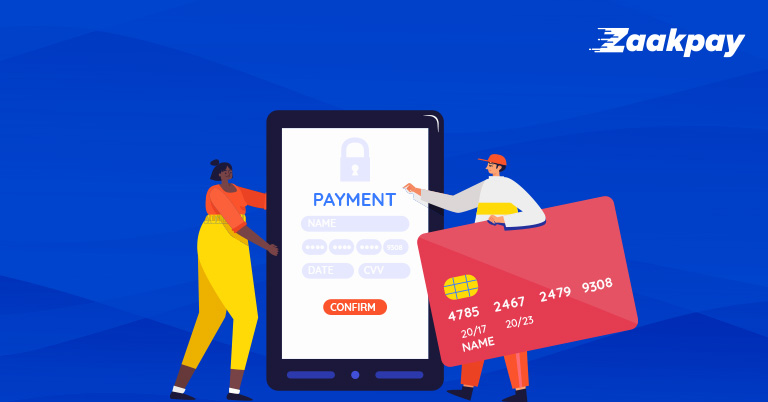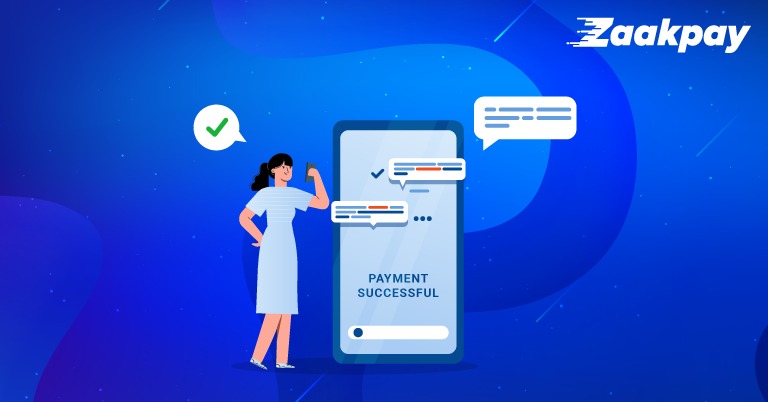Credit and debit cards are two of the most common ways of online payment processing. According to a recent report, nearly 58 million credit cards and 850 million debit cards were active in India in August 2020. Ease of use is the primary reason behind these exceptional numbers. What is quite intriguing about this is that millions of customers and merchants use them without even knowing about the several processes behind the scenes of debit or credit card processing.
Overview of how card payment process works
The steps involved in debit and credit card payment processing are precisely similar. However, to understand the process in detail, it is necessary to know about the players involved. The major players in the process are listed below:
- Cardholder: As the name suggests, the credit or debit card owner is the cardholder. The individual is allotted the card from the issuing bank based on several factors. Every payment gets initiated by a cardholder itself. The cardholder is paying the business for a product or a service.
- Issuing Bank: Issuing bank is the customer’s bank that has given the credit or debit card. This bank is responsible for verifying the card details entered into the credit card payment system and the availability of funds in the customer’s account before authenticating the transaction.
- Merchant: While the word refers to any seller in general terms, it has a special meaning in the context. A business that sells the product or the service and is receiving remuneration or price in exchange for it is the merchant. This is the business in which the money would be deposited after the successful transaction.
- Acquiring Bank: Acquiring bank is the merchant’s bank in which the merchant account is opened and maintained. It is this bank that enables the merchant to accept credit card payments. Following successful processing of the payment, the funds get deposited in the acquiring bank account. In fact, this is what the name is derived from.
- Card Association: In addition to the logo of the issuing bank, every card contains the logo of a company in the likes of Visa, MasterCard, or American Express. While every card user would be familiar with these names, their real purpose is perplexing to most. Both the issuing and acquiring banks must mandatorily be card association members. The association is the deciding body for the interchange fees and qualification guidelines. Setting up coordination between the issuing bank and the acquiring bank is also part of the card association. As a result, the card association becomes a key part of the debit or credit card-based electronic payment system.
- Payment Gateway Service: The customer has to share the card details to process a payment. A payment gateway is a front-end service that accepts the details from the customer and transmits it further after using card tokenization to protect it from fraud. The web page prompts the customer to type in the card number, account holder’s name, expiration date, CVV, and verify the OTP. Among the payment gateway in India, Zaakpay is a leading brand preferred by most businesses.
Stages of the Payment Process
Debit or credit card payment processing occurs in a couple of stages within just a few minutes. All the steps get completed in the backend.
Authentication and Authorization
The first stage of payment processing deals with verifying the payment information and notifying the relevant parties about it.
- Online payment is initiated when the customer enters the moment card details on the payment gateway page like that of Zaakpay. This request can be originated through any device that accesses the debit or credit card-based electronic payment system through the business website.
- A request from the merchant gets sent to the payment processor, who in turn forwards the same to the issuing bank for verification via the card association.
- The authorization request bears all the details the issuing bank requires to authenticate the transaction. The customer’s name, card number, CVV, expiry date, and AVS are essential details for the request.
- It is the issuing bank’s responsibility to conduct all the necessary checks at this stage. In addition to validating all the customer’s information, the issuing bank checks the availability of funds or credit.
- Based on all the necessary factors, the bank then sends an approval or denial to the card association, merchant bank, and the merchant.
- The first step is completed with the notification of the payment authorization being sent. On being approved, the system proceeds to the second debit or credit card processing step. In case of a denial, the transaction is aborted, and the customer is notified about the same. Few gateways like Zaakpay also inform the merchant about the payment attempt.
Clearing and Settlement
The clearing and settlement stage involves the actual debit or credit of funds from the customer to the merchant. Necessary logs are created thereof within the debit or credit card payment system.
- Merchants send a list of all authorised payments to the payment processor.
- Along with the payment details, the processor forwards the request to the card association.
- A Communication to charge a debit from the account holder’s bank is established with the issuing bank.
- After deducting any applicable transaction charges, the issuing bank forwards the funds to the merchant’s bank, depositing them into the merchant account.
Conclusion
To accept credit card payments efficiently, merchants need to know the process that facilitates the payment in the background. By relying on Zaakpay, businesses can accept debit or credit card payments without extra hassle, maximising their revenues.
Follow Us on:

